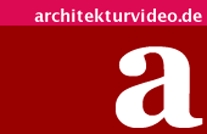Ateliers Jean Nouvel - Inter-cultural Institut du Monde Arabe - Paris
- Play of light inside the building © Ateliers Jean Nouvel
- White tower behind glass – Babylonian temple tower, a Western interpretation © Ateliers Jean Nouvel
- The two wings stand for orient and occident moving towards each other © Ateliers Jean Nouvel
- The Southern façade with 240 metal squares with 57 different iris diaphragms © Boris Doesborg
- Interior of the iris diaphragms in oriental ornaments © Boris Doesborg
It sounds like every architect’s dream; hardly any requirements given by the principal, building on a first-class area near Nôtre-Dame in Paris and a once-in-a-lifetime scenic view at the left of the Seine river. Yet the challenges of building freedom with the inter-cultural Institut du Monde Arabe (Arab World Institute) is something Jean Nouvel and his team of architects Pierre Soria, Gilbert Lezenes and Architecture Studio had to balance. The employer did not truly have a content-related concept for their inter-cultural Institute, and their ideas were also very vague in general. There wasn’t much to cling to with respect to restraint. Still, the team of architects has created a building successfully erecting a bridge between oriental building art, modern high-tech and a content-related metaphor: a 10-story steel construction with glass and aluminum façade, consisting of two wings, in the South, marble in the inner yard with oriental decoration, and the “Tour des Livres“, a spiral book tower of white concrete in the East. What was an architectural novelty in 1987, still impresses today with its styling and coherence.
Building Art Transfer
The convincing idea: transferring building styles from the orient into Western materials and technology. For this, 240 man-high metal squares with 57 iris diaphragms of various sizes in the form of old Arabian mashrabiyas - carved or primed wooden ornaments – have been deployed. Each diaphragm can be opened or closed by a computer, depending on the intensity of the sun's rays. Oriental ornaments, imitated with Western high-tech materials, create wonderful light reflections and shadows into the building’s interior. Due to over twenty years of daily use, only some of the mashrabiyas still operate. Since quarrels between the sponsors consisting of the French Department of Foreign Affairs and 22 Arabian member states have brought financing and support to a standstill. The network control, that used to work as precisely as a clockwork with its two motors per square, is now out of order.
Two Wings – Two Culture Groups
Nouvel, who had his break-through on a national and international level with the Institut du Monde Arabe, received the Aga Khan Award for Architecture in 1989. The jury was particularly fond of the idea of having a two-winged basic construction for the two culture groups oriental and occidental. This symbolizes – as in reality – the often practiced separation of these two cultures. Yet it does not stay this way; it creates a friendly and connective atmosphere of getting to know each other, understanding and enrichment through the gorgeous marble and mosaic designs. The fact that it cannot be seen unless you are on the sixth floor and that it cannot be accessed by the public may be a side note in the changing relationship of orient and occident … However, the motif of the Riad (inner courtyard) is there.
Forecourt with Underworld and Echoes of a Ziggurat
Beneath the forecourt, you will find the “Salle Hypostyle". It mirrors the Arabian-Muslim motif of the columned hall. Large mosques employ countless ornate columns on a perfect grid. The book tower reminds one of Babylonian ziggurats, tiered temple towers, through curvaceous . In a filmed interview, Jean Nouvel said during the construction phase: “I wanted to deal with the style, the mosaics and ornaments of the Arabian world and create a bridge to our world, to Paris, this location with its exceptional view across the Seine, through their modern interpretation.”
Fondation Institut du Monde Arabe
Ateliers Jean Nouvel, Paris, France
Completion 1987
GFA: 26,900 m²























Vanina De Marco
mmmmm I love it!!!
1 year 2 months 1 week agoPrachi Trivedi
looking nice
1 year 2 months 1 week ago